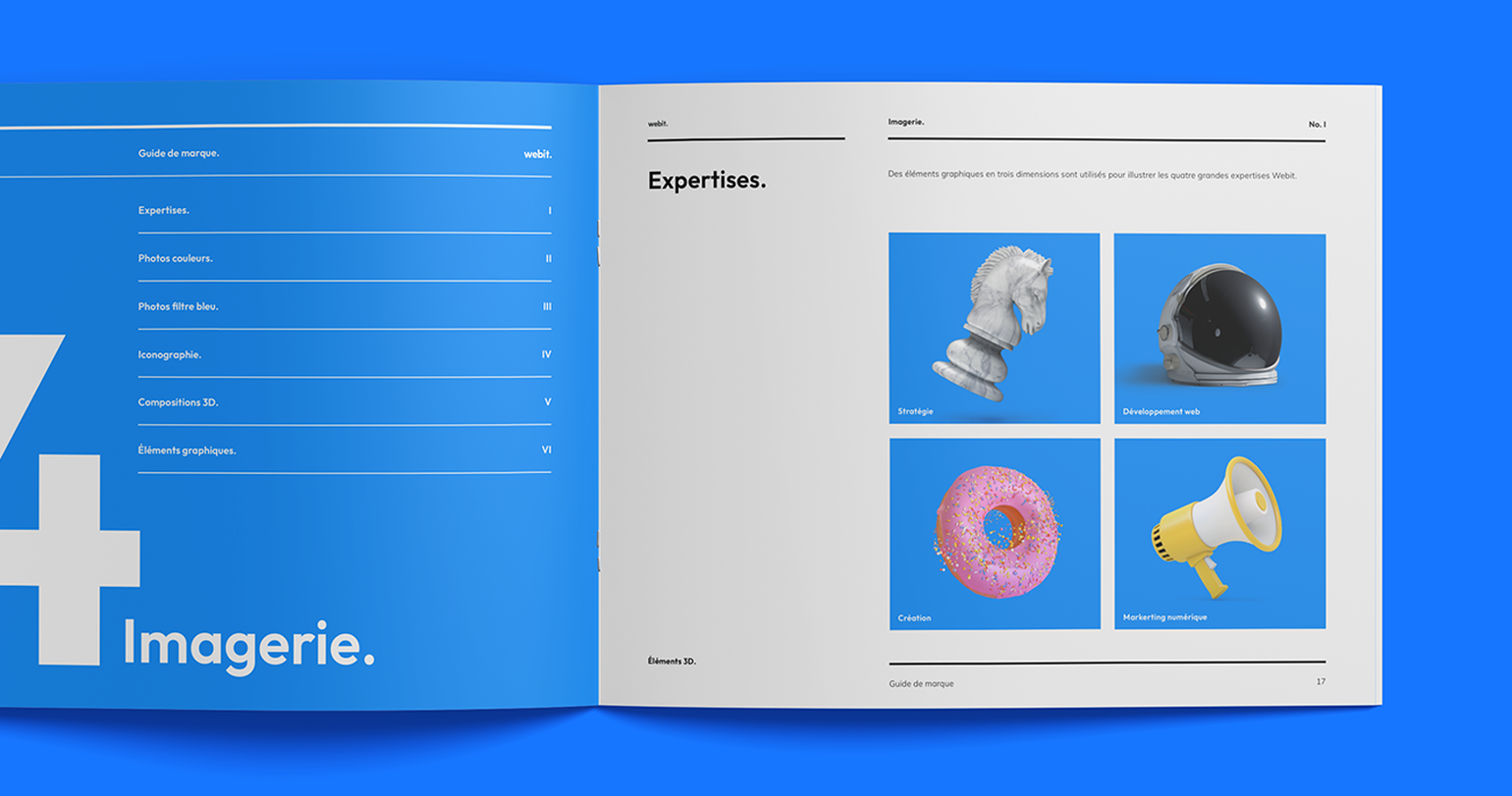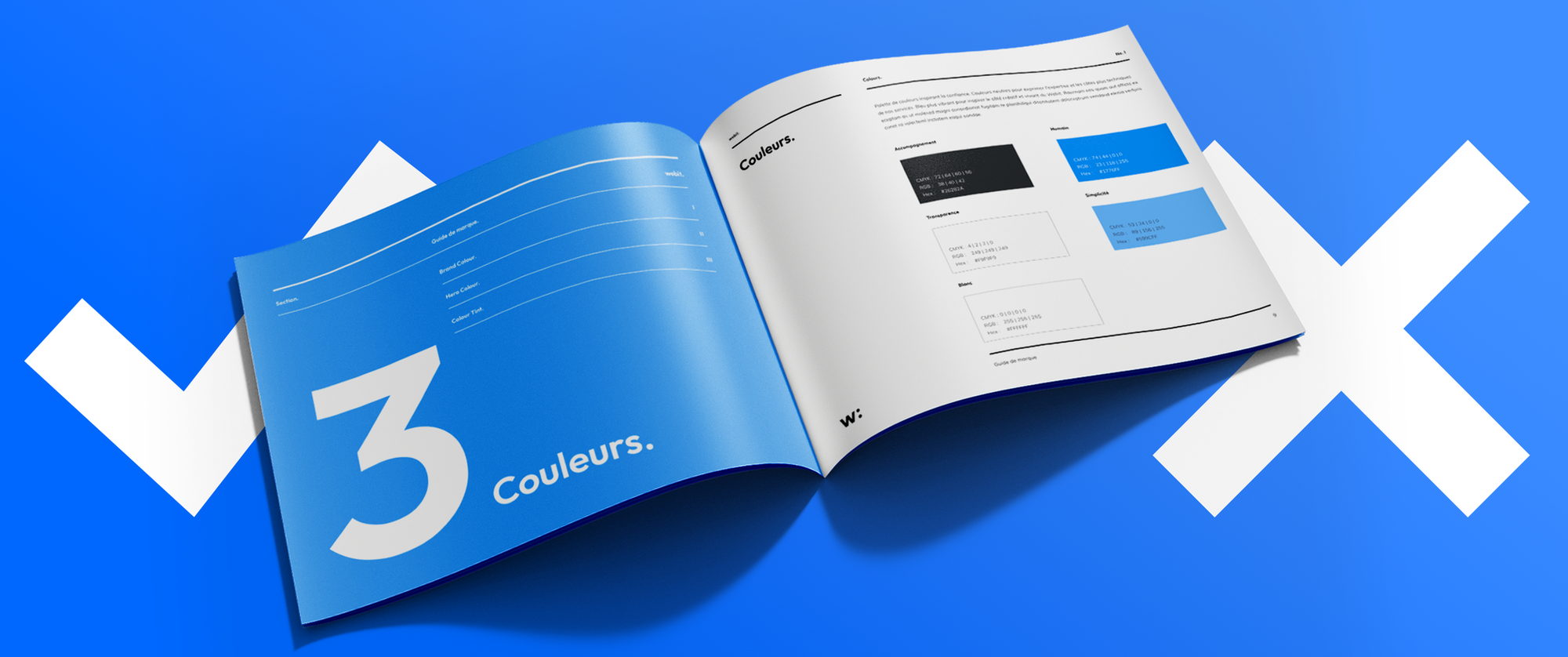A brand guide is a reference document that covers all the graphic standards to consolidate your visual identity.
Its guidelines enable every employee, business partner, agency, or any other user to properly represent you in all communication media and be worthy brand image ambassadors.
What should a good brand guide contain to meet these needs? And how is it produced? This article will help you determine what's essential and how to proceed. It will also briefly explain the purpose of each section of the guide.
What is the purpose of a brand guide?
Isn't a logo enough for people to recognize a brand? Wouldn’t it be great if it were that simple? Unfortunately, brand recognition is far more complex. In one way, this is a good thing since it gives you more distinctive elements to leverage and help set yourself apart from your competitors.
While today companies such as IGA, Canadian Tire or Michael Kors are recognizable at a glance, they first had to go through the crucial brand guide production stage.
This process is often paired with creating the new logo or updating the existing logo. It’s integral to a good marketing and advertising strategy and requires the support of an experienced creative and design team.
To quote a well-known expression, “Don't try this at home; we’re professionals.”
What are your visual identity must-haves?
The points presented here are the basis of a complete brand guide. These elements should be presented this way, regardless of where you work. Section names may vary slightly but, essentially, they are:
- Logo and all its variations
- Main and complementary colours for digital and print
- Typography, variants, and substitute font
- Graphic elements or brand applications: motifs, icons, illustrations, etc.
1. Logo and slogan
Your logo translates your story into a symbol. It represents your values, reflects who you are, speaks for itself and becomes your front-line ambassador.
With or without a slogan, it’s presented along with a creative argument to show the thought process behind the creative process.
The logo section has a minimum of three parts:
Symbol, signature, and slogan
In the brand guide, the symbol (the logo), the signature (the name of your brand), and the slogan are presented, if applicable. Then, its variants and variations are detailed: original colour, reverse colour, black and white, horizontal logo, square, etc.
Uses and prohibited uses
The logo variations that should be used in specific contexts are presented, e.g., the favicon (small icon appearing in the top tab when you are on a site), in the website header, on various social media platforms and in print.
The prohibited uses serve to protect your brand image and prevent anyone from deconstructing it or using it in unauthorized formats.
Size and protection zone
The protection zone around your logo is the minimum space that must be respected to ensure visual balance and avoid any part being cut off or too close to a border when it’s printed.
As for the size, it optimizes the visual. You don't want people squinting to recognize your logo or making it impossible to read your slogan.
2. Main and complementary colours
Is your logo monochrome, or does it feature multiple colours? In both print and digital formats, the other main colours representing your brand image are derived from the logo, and neutral shades are chosen to match. If your logo is black and white, choosing other colours is up to you.
- Neutral shades are chosen mainly for background display.
- Two or three colours are used for the other graphic elements (boxes, icons, buttons, quotes, etc.).
- Specific colours are used for text, titles, and subtitles.
It's essential to choose at least one accent colour to avoid monotony and add complementary colours over time to lend depth and dynamism to your digital and print communications.
Important!
Your agency must indicate the colour references in three formats and, if possible, add the Pantone code:
- R,G,B recipe – digital
- Hexadecimal code – digital
- CMYK recipe – print
3. Typography
The chosen typography often matches the style used in your logo to maintain uniformity. However, it can also be completely different, for instance, if your logo includes cursive or highly decorative characters.
The key is to use a font that’s easy to read, especially as your audience now searches and reads mainly on mobile devices.
For this reason, the partner agency will also recommend stipulating minimum sizes for optimum digital and print visibility in your brand guide.
Similarly, as some fonts aren’t installed on all workstations, the agency will suggest an alternative font, an approach also used when standardizing email signatures or designing newsletters.
The brand guide’s graphic elements and images
Taking the Webit interactive brand guide as an example, we determined the type and styles of images to be used on our website, in our blogs and infographics, in print and on social media.
- Our team took the blue-filter photos during a professional photo shoot.
- The 3D photos used for our expert appraisals represent a strong, calculated, and rigorous image.
- The blogs maintain the 3D composition approach, as does our social media.
- The floating, moving bubbles on the site tie together the various designs, including social media posts.
In this way, our brand maintains consistency across all communication media and stands out from its competitors.

Content: the second component of your brand image
In addition to your visual identity, your written voice is crucial to promote your brand image.
Who’s your audience? What tone should you use? What types of content and social media platforms should you use?
Your website is the first portal to your content
Your site informs and educates your clients and prospects and helps them discover your brand. To attract them, however, you need to know how to talk to them through compelling storytelling that arouses and maintains their interest.
Defining your content strategy
Planning a content strategy that’s in line with your business objectives includes creating new content regularly and letting people discover who you are, your products, services, raison d'être, and values.
Often difficult to maintain without the help of a specialized copywriting team, content strategy is one of the services offered by 360 agencies like Webit.
How to start creating your brand guide
Prioritize your brand guide. It's the foundation on which to build your visibility, credibility, and brand awareness.
Therefore, the initial brainstorming process about your story must align with your:
- Values
- Culture
- Mission
- Vision
Your visual identity will help your target audience discover your company, and your brand image will help you build customer loyalty.
Want to discuss it? See how much Webit can simplify your life.
If you’re curious, check out two sample brand guides produced by Webit. One for La maison des étudiants canadiens (MEC) and the other for the Montreal SPCA.






